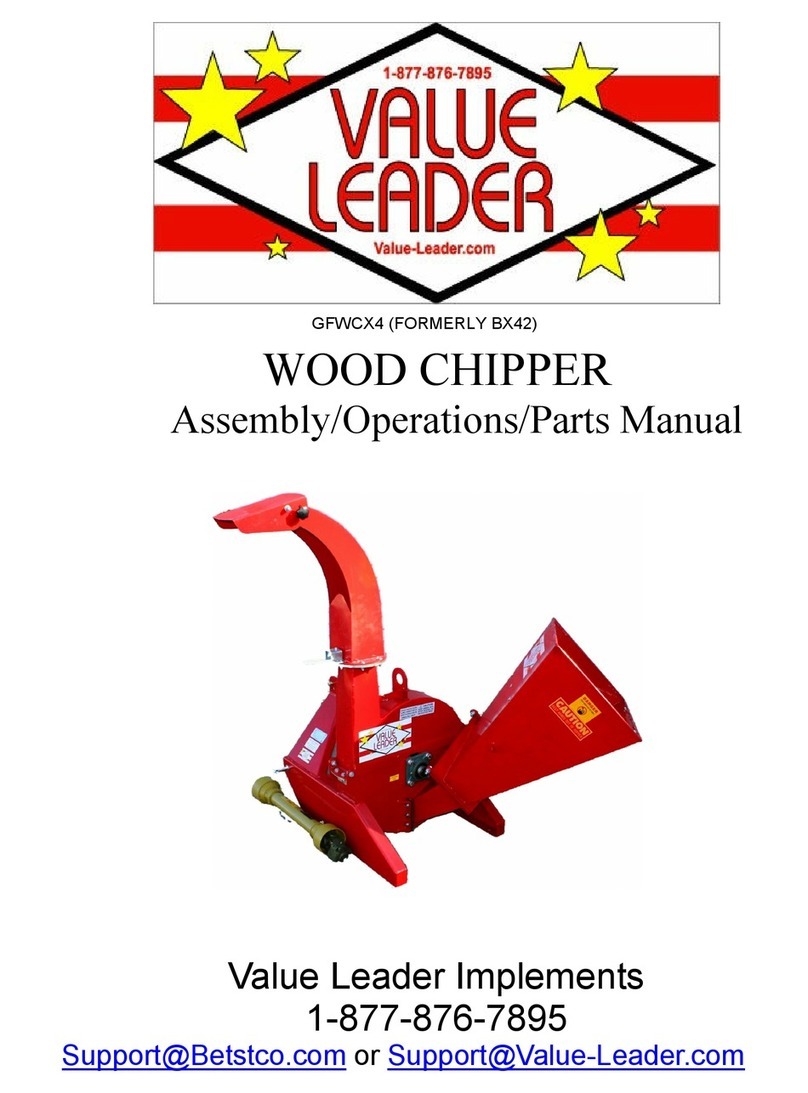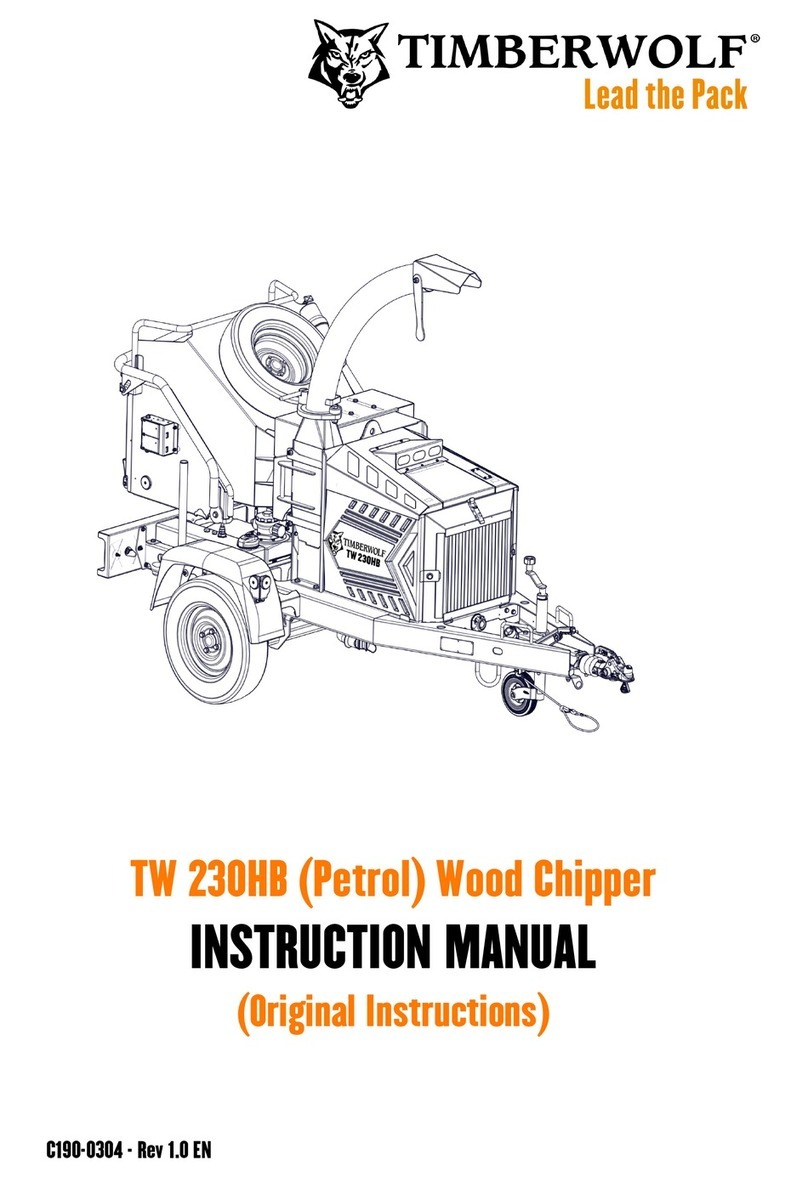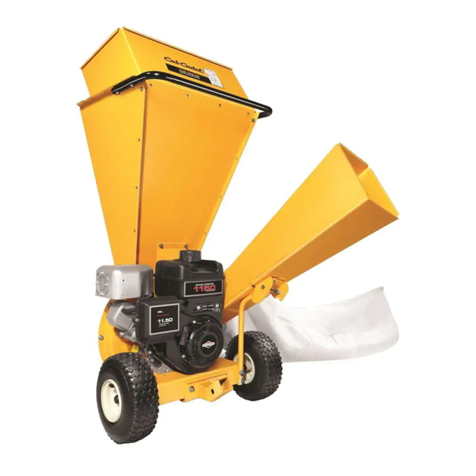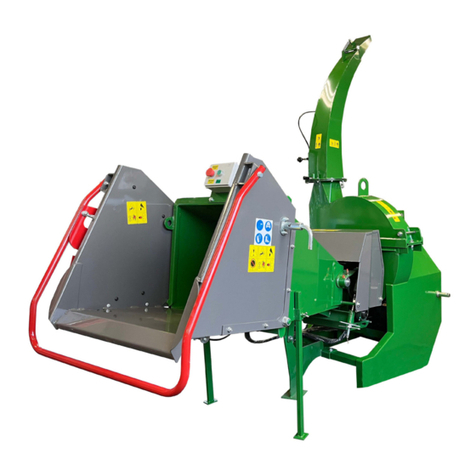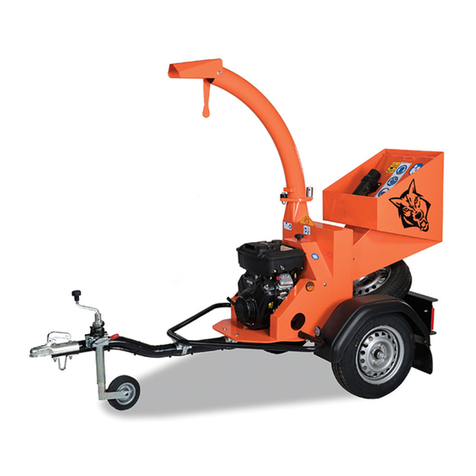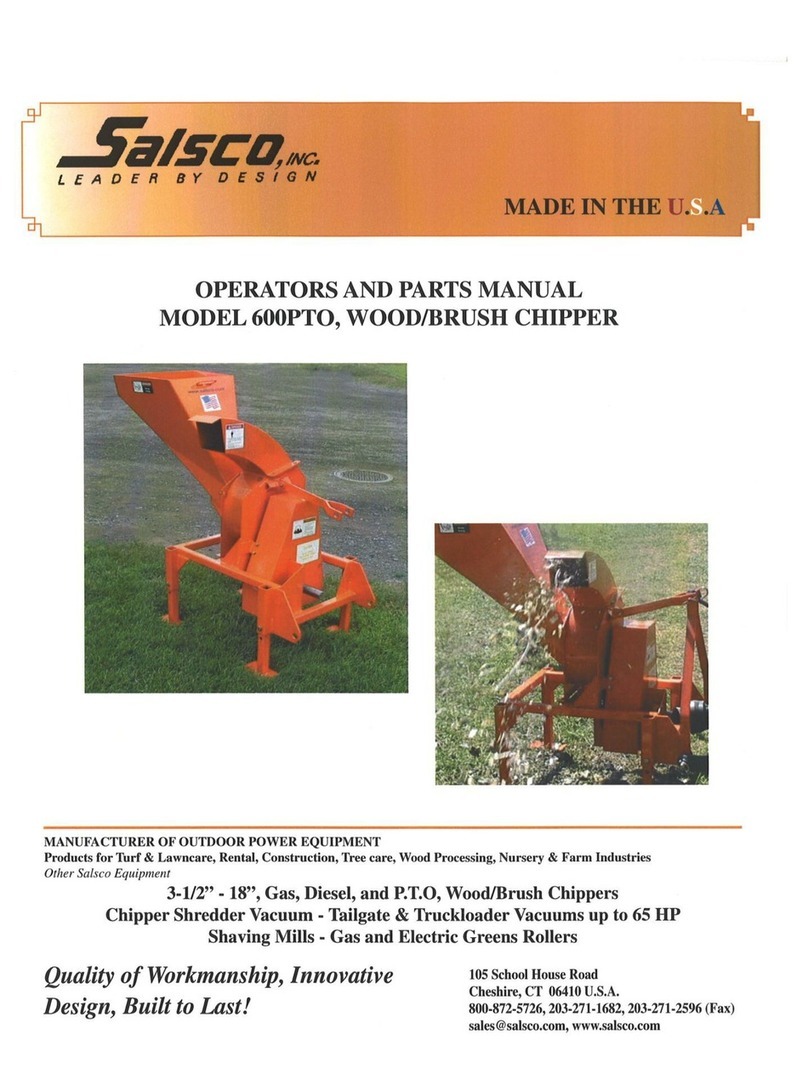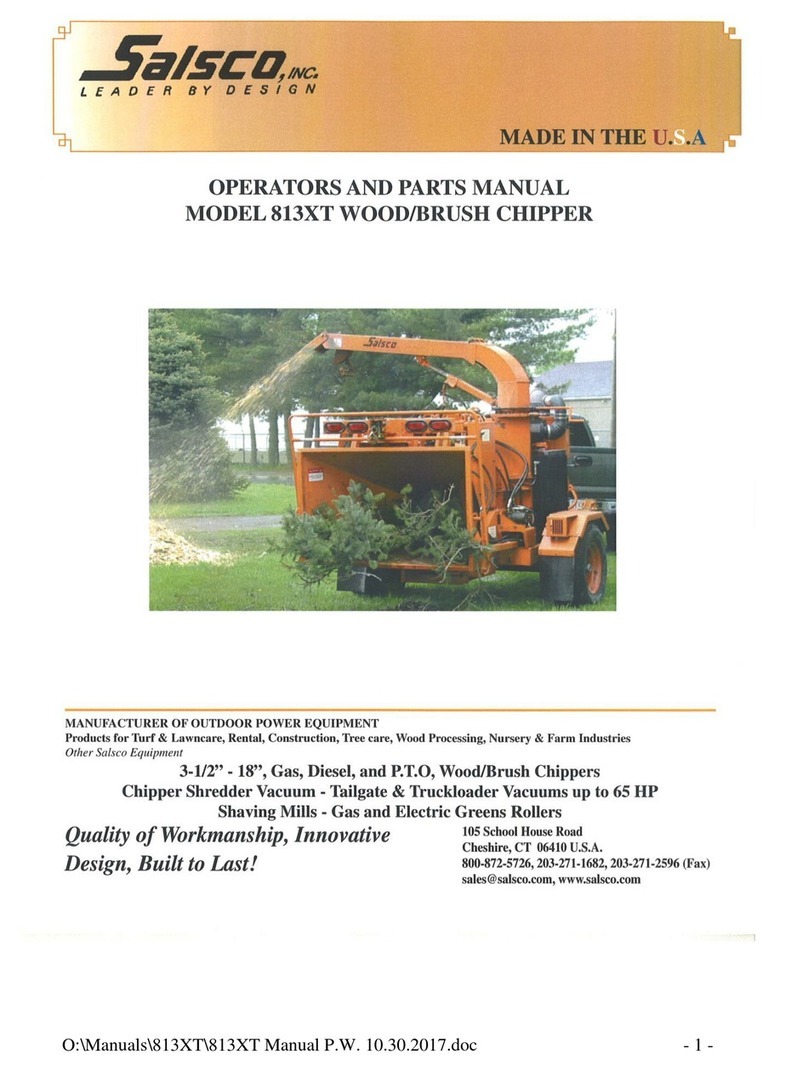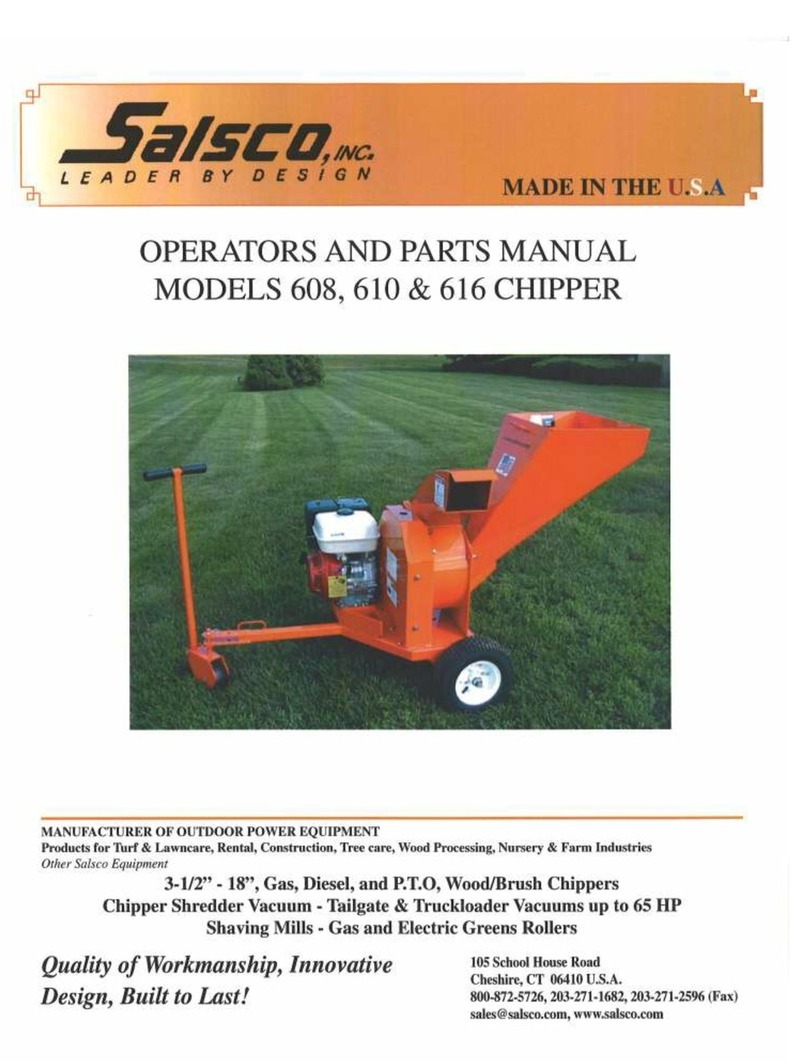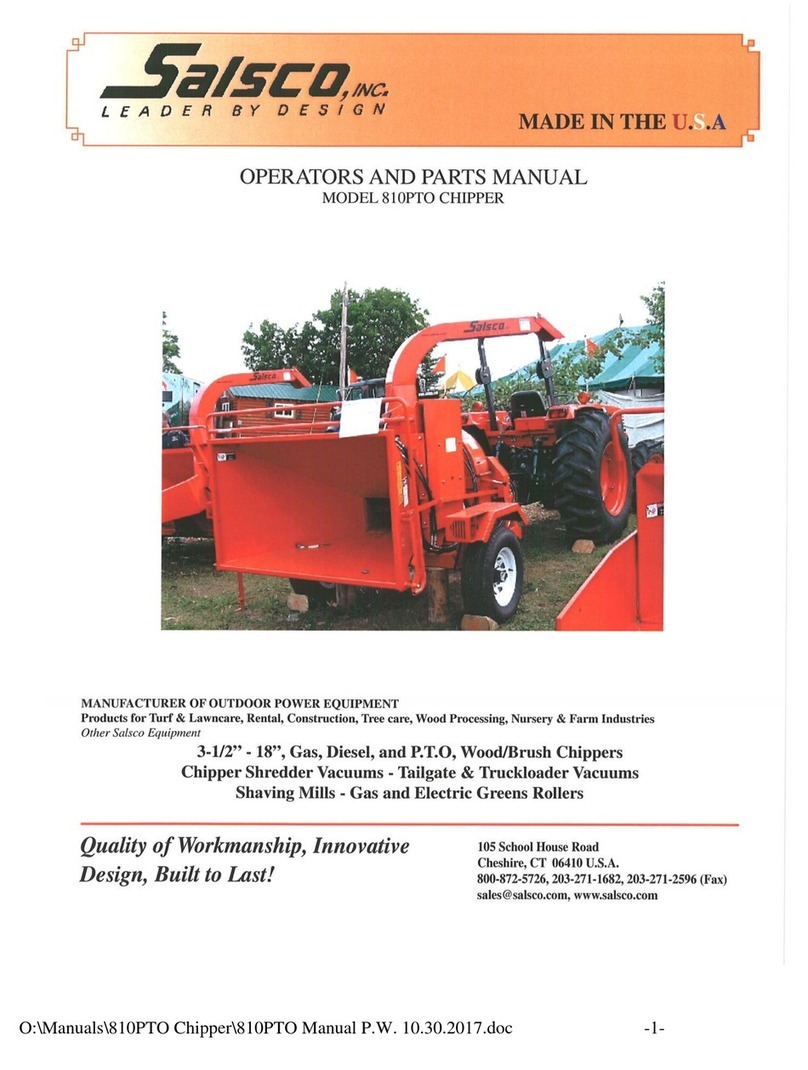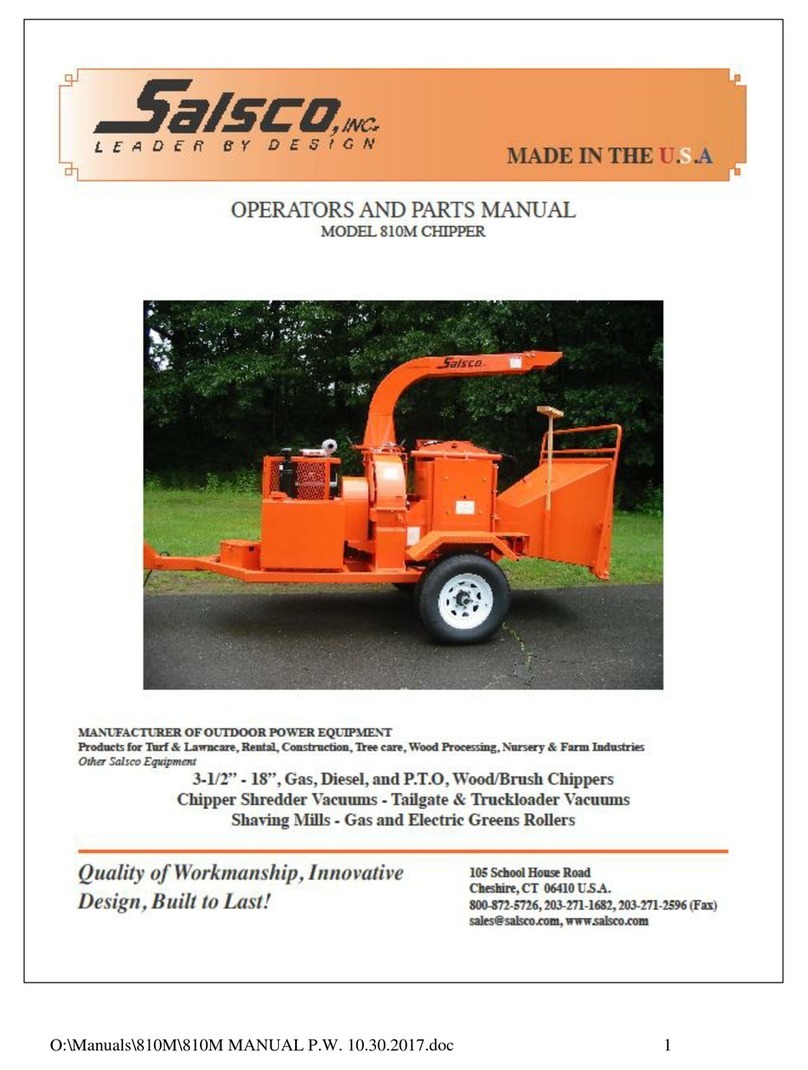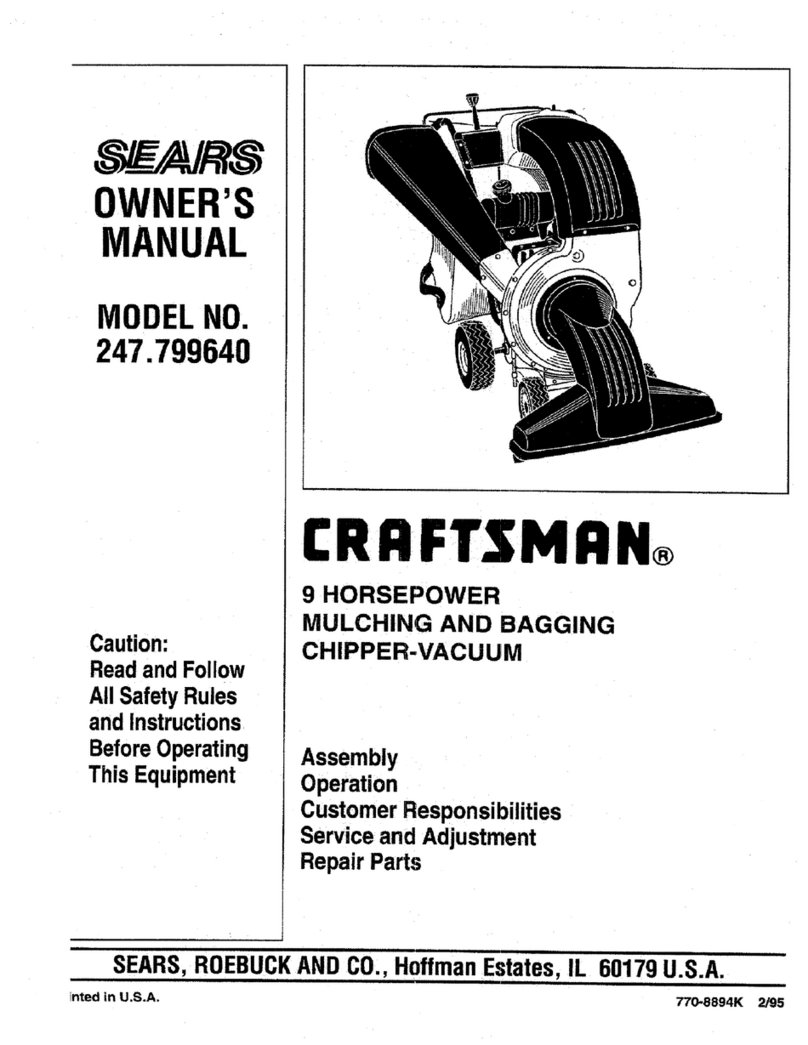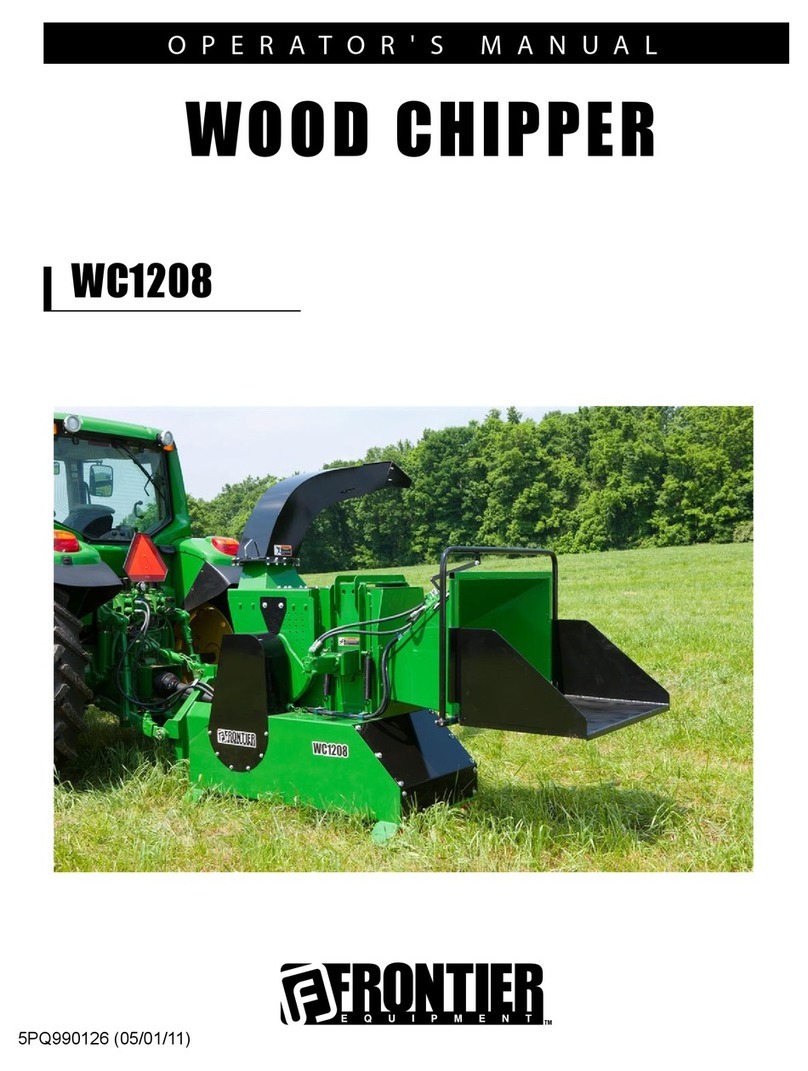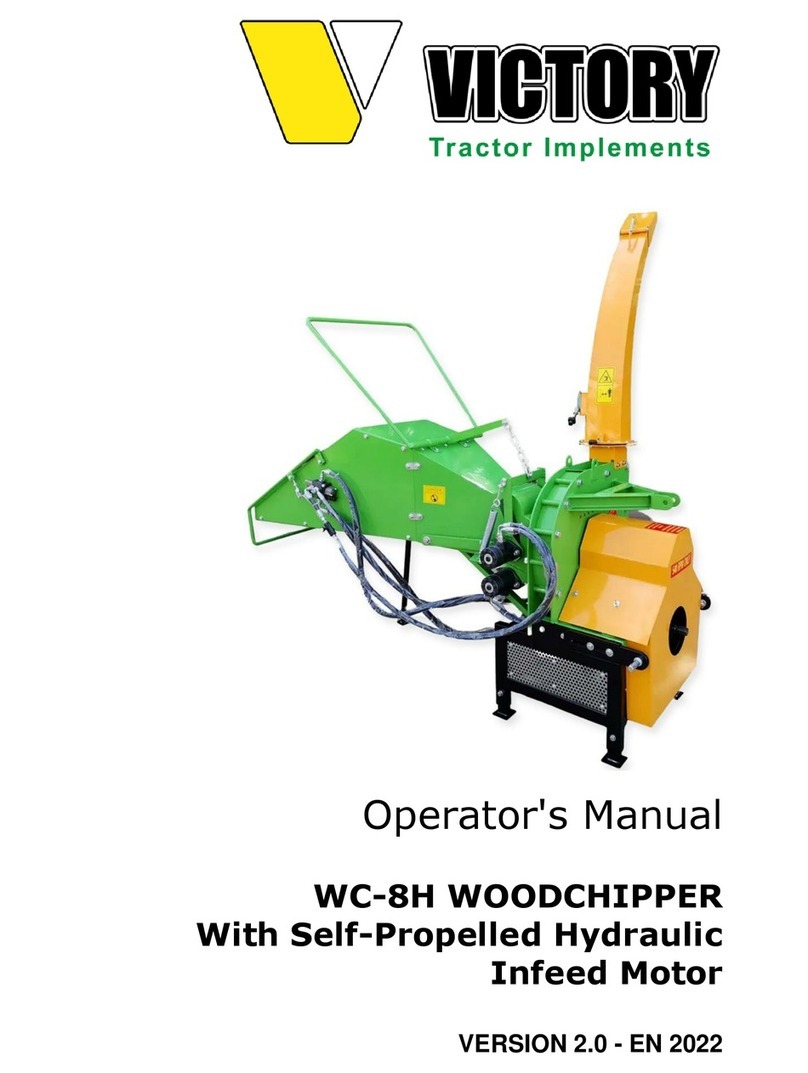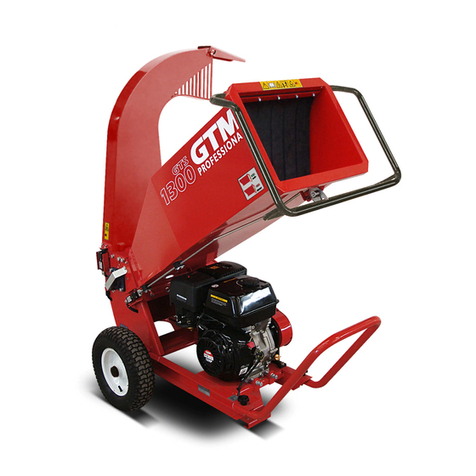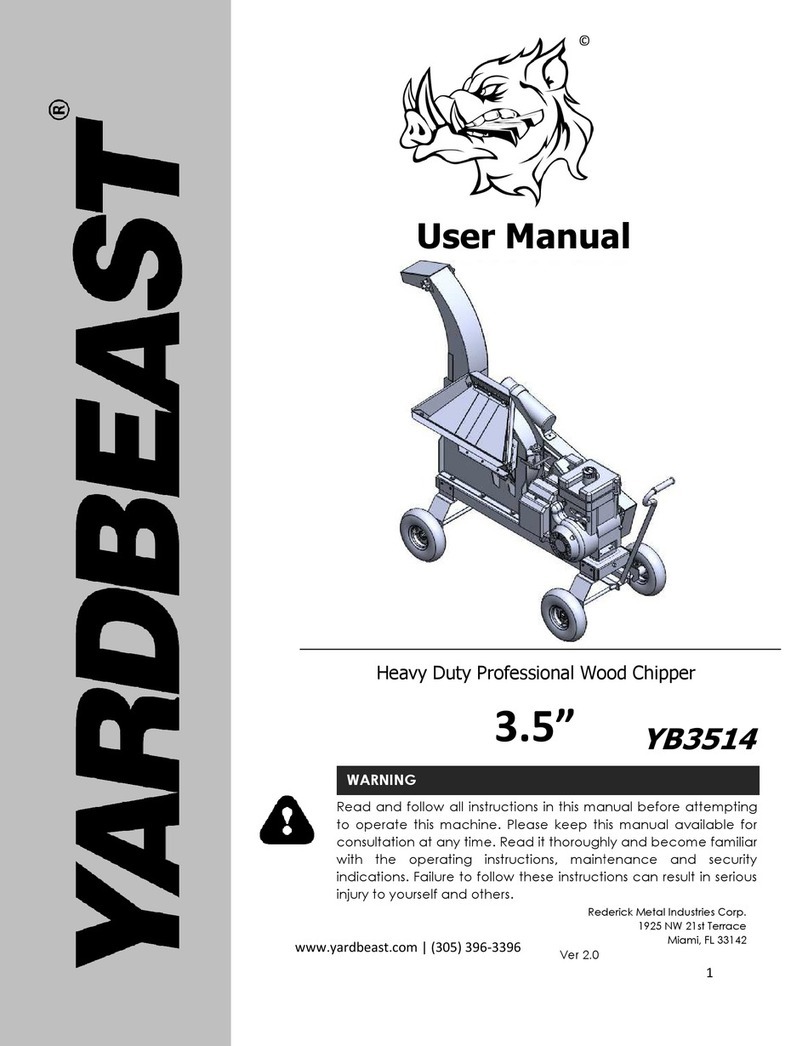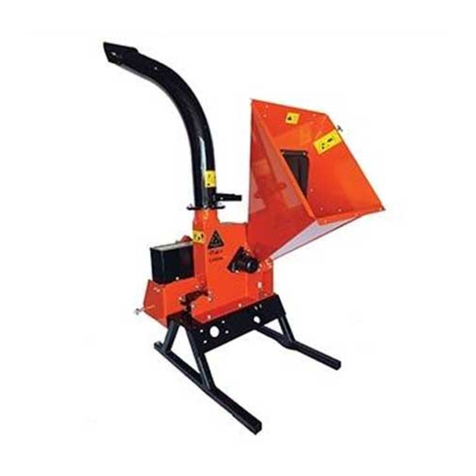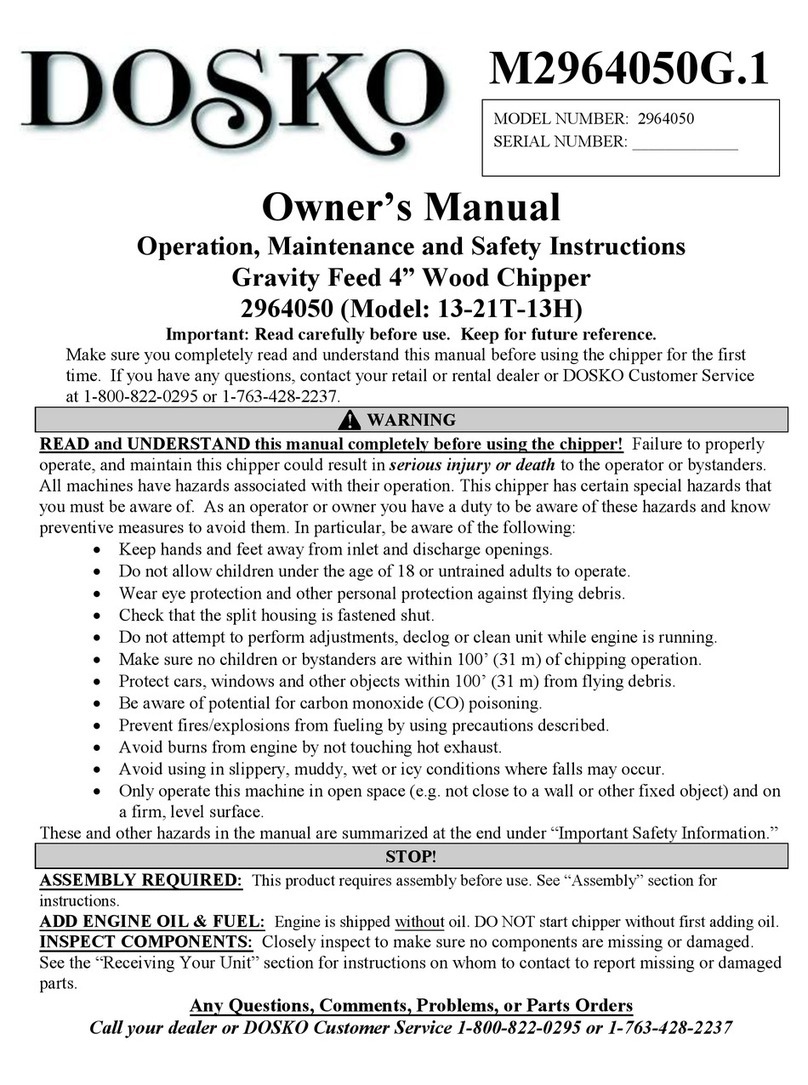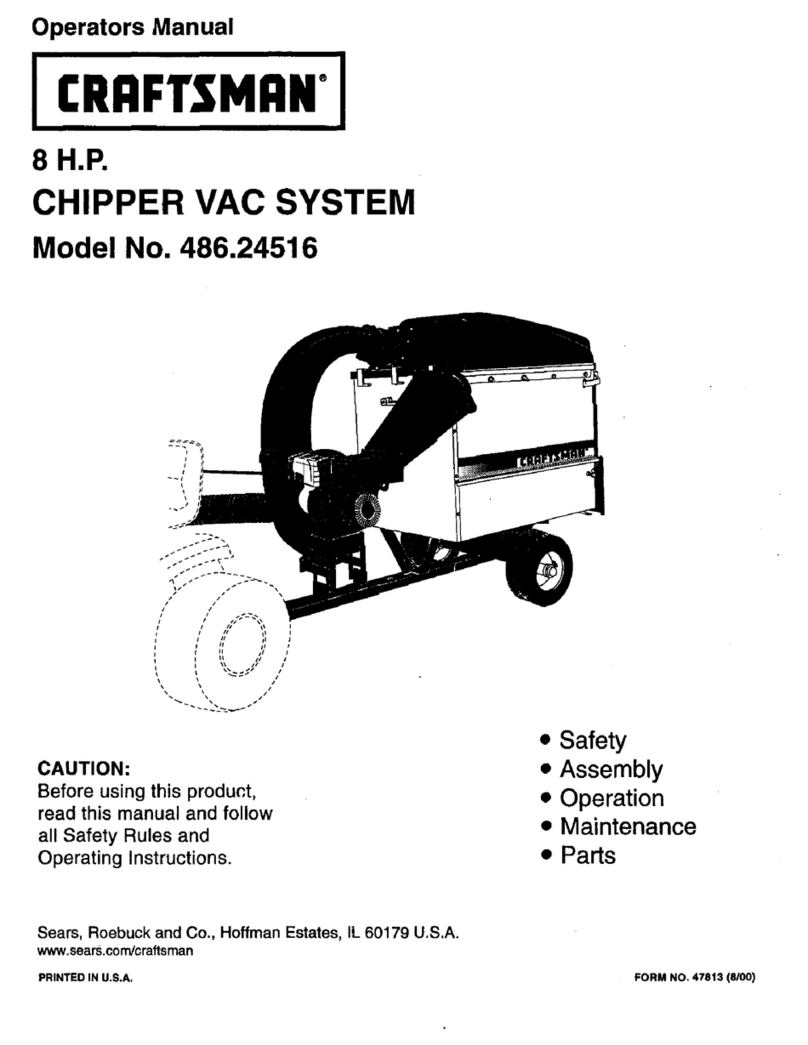SERVICE AND MAINTENANCE INSTRUCTIONS
A. CHECK PTO CLUTCH ADJUSTMENT. PASS THIS ALONG TO ALL SERVICE PERSONNEL!
REFER TO THE CLUTCH MANUAL.
HINT: Improper adjustment of PTO clutch may shorten clutch life. Make sure adjustments are made properly.
NOTE: New clutches or new facings usually require several, frequent adjustments until the friction facing
surfaces have “worn in”. The clutch friction facing will become glazed, and possibly permanently
damaged if the clutch is permitted to slip.
NOTE: If your unit is equipped with a Fluid Coupler, following is a recommended list of oils to be used.
1. 10WT –Non-Detergent Oil
2. ISO32 –Hydraulic Oil
3. AW32 –Hydraulic Oil
4. VG32 –Hydraulic Oil
(Refer to the Fluid Coupler manual for further recommendations and maintenance)
B. IMPELLER REMOVAL PROCEDURE
1. Remove key from engine and disconnect battery cables.
2. Remove discharge elbow.
3. Remove pin lock and pivot top housing open.
4. Remove top housing half.
5. Remove belt guard.
6. Remove hydraulic pump. Leave hoses connected, just slide out of sleeve and lay on the side.
7. Loosen engine mounting bolts and back off slide pusher bolts. Loosen belt and remove.
8. Remove pulley from impeller shaft.
9. Remove top and bottom clevis pins from front feed wheel lift cylinder if unit is equipped with this
option.
10. Loosen horizontal and vertical bed knives and slide them away from the impeller
11. Remove chip blades from impeller. (Follow procedure in service schedule, line item #4)
12. Connect lifting device to impeller. (Use bolt hole for chip blade and KEEP IN MIND –WHEN
CHOOSING A LIFTING DEVICE, THE IMPELLER WEIGHS APPROXIMATELY 750 –LBS.)
13. Remove bolts from both flange bearings. Back off setscrews in bearings.
14. Carefully lift impeller out of machine.
15. Remove both flange bearings and all spacers from impeller.
C. INSTALLATION OF IMPELLER
1. Connect suitable lifting device to impeller and set in machine. KEEP IN MIND –WHEN CHOOSING
A LIFTING DEVICE, THE IMPELLER WEIGHS APPROXIMATELY 750 –LBS. Be sure both shaft
ends are clean and free of burrs. Bearing must slide freely on shaft.
2. Slide bearings on shaft and start the four bolts, rear bearing, two front bearing, two front bearings
diagonally.
3. Tighten four bolts on rear bearing and two bolts on front bearing, diagonally.
4. Slide impeller toward rear of machine. Impeller hub should touch rear-bearing race.
5. Measure distance from impeller hub and front bearing race.
6. Remove front bearing slide shims over shaft to equal that distance CAUTION: DO NOT ADD MORE
SHIMS THAN ARE REQUIRED. This could cause premature bearing failure. Reinstall front bearing.
7. With impeller shimmed and bearings tight, impeller should not slide front or rear.
8. Install all bearing mounting bolts with blue Loctite. Also, Loctite and tighten bearing set screws.
9. Install all chip blades. Be sure to use new hardware and Loctite each time blades are removed and
reinstalled. (Follow procedure in service schedule, line item #4.)
10. Set bed knives and lock in place. (.070 clearance between chip blades and bed knives).
11. Reinstall top housing and discharge elbow. Be sure to use roll pin to keep housing aligned.
12. Install pulley. Be sure to use straight edge to line up pulley.
